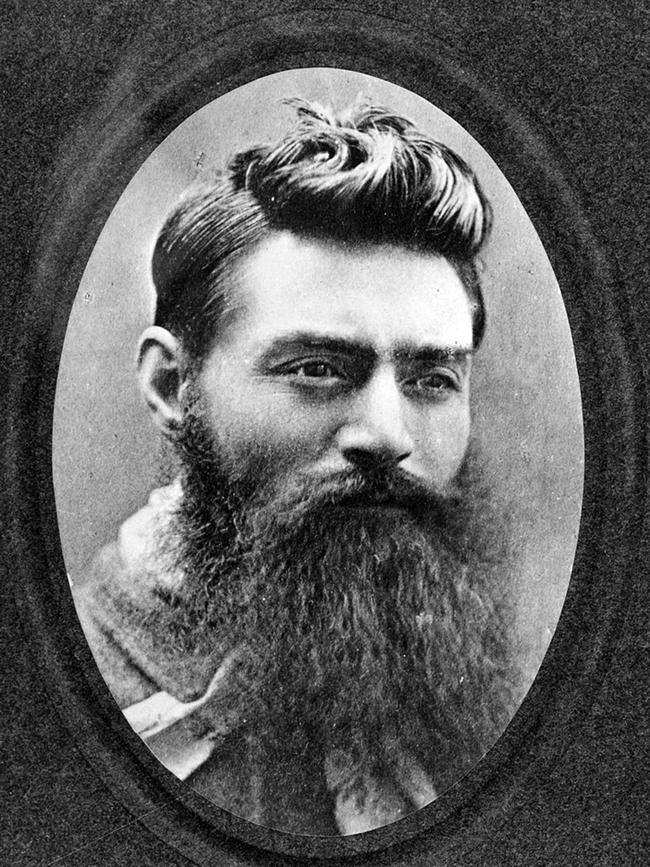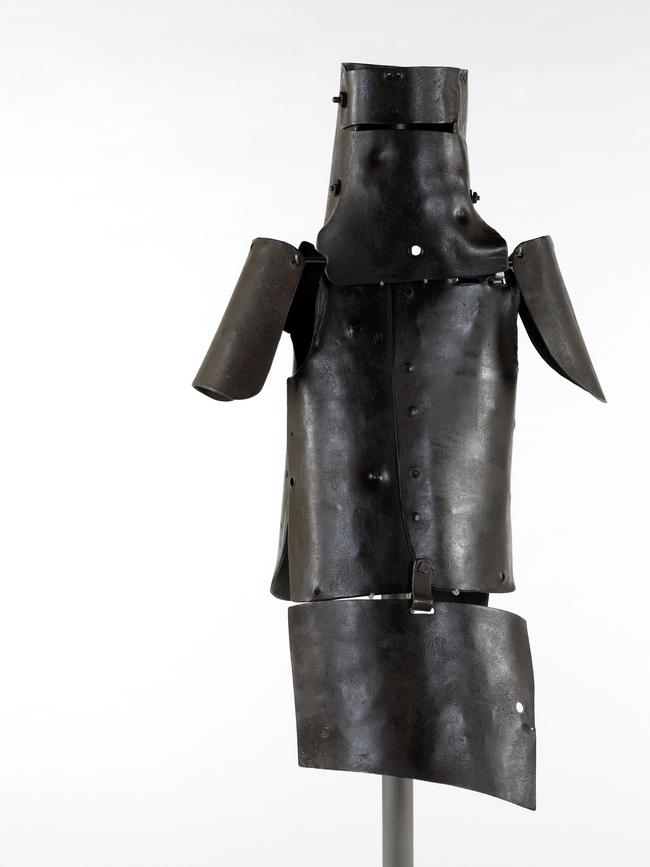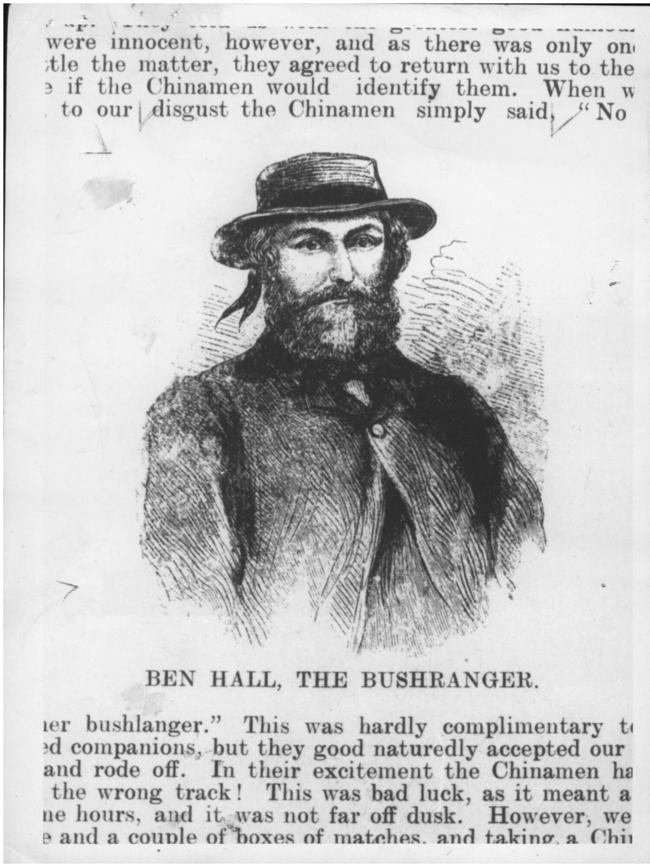Guardians of the Dead podcast: How modern forensics is helping to cast Australia’s bushrangers in a whole new light
Australia’s bushrangers are lauded as folk heroes but is the narrative built on facts or lies? Prof Roger Byard explains how modern forensics are helping experts establish the truth about our most famous outlaws. Listen to the podcast.
True Crime
Don't miss out on the headlines from True Crime. Followed categories will be added to My News.
WARNING: This podcast series features graphic descriptions of forensic pathology techniques, and descriptions of violent crimes, accidentsand traumatic incidents that some listeners may find distressing or upsetting.
“Ah well, I suppose it has come to this”. As a final statement before being led to the gallows it doesn’t quite have the same poetic ring to it as “such is life”.
But it does highlight the problem with history and how the mythology Australians have constructed around our country’s bushrangers may, in some cases, be more fictitious than factual. The truth is, no one knows exactly what 25-year-old Ned Kelly said in the moments before he was hanged at Melbourne Gaol on November 11, 1880.
Some newspaper reports had Kelly uttering the infamous three-word phrase that now adorns so many backs and arms on T-shirts and tattoos, while others reported that Kelly, resigned to his inevitable fate, said simply “Ah, well, I suppose it has come to this” as the rope was placed around his neck.
LISTEN TO THE EPISODE BELOW
Please note: If you cannot see the audio player embedded here, try viewing this article via a web browser. Advertiser app users can listen to all the episodes in this series by selecting the “Podcasts” tab at the footer of app.
Forensic pathologist Prof Roger Byard says this sort of historical ambiguity has helped outlaws like Ned Kelly rise to the status of folk hero, a sort of Australian Robin Hood, when the evidence hints at a far less charitable reality.
Prof Byard spoke about his extensive research into the exploits of Australia’s bushrangers, and how modern forensic techniques have been helping to dispel some of the myths and legends around our most famous bush bandits, in a new episode of Guardians of the Dead.
“There’s been a psychiatric evaluation of his behaviour and that’s been published in the last few years and he’s a classic sociopath,” Prof Byard says.
“The thing about Robin Hood is that he didn’t steal from the poor and keep it himself but that’s what Kelly did.
“We know he was a cattle duffer and stole horses. Now, in rural Victoria where he was, there weren’t all that many squatters so most of the people he was stealing from were actually small sharecroppers. You steal their one cow and one horse and they starve. There’s no Centrelink. And I don’t think he cared.”
Prof Byard says Kelly’s extremly violent tendencies are laid bare in Kelly’s famous Jerilderie Letter.
“In that he says anybody who opposes him, he wanted to actually tie them down over an ant heaps, cut them open, take their fat, boil it and pour it boiling down their throats.
“He wanted the blood and the brains of the police to rain down.”
Prof Byard was part of a team of experts who researched the exploits of our most infamous bush bandits for a four-part Foxtel documentary series, hosted by Mike Munro in 2017.
It wasn’t his first brush with the outlaw. In 2011 he wrote a research paper that suggested having a Ned Kelly tattoo may be bad for your health. The paper looked at the autopsies of 20 people with tattoos of or about Kelly and found that all of them were white men and 85 per cent died an unnatural death, either suicide, an accident or homicide.


The documentary team, which also included historian Dr Kiera Lindsey and archaeologist Adam Ford, pooled their expertise to help reconstruct events that took place nearly 140 years earlier.
Prof Byard says in some cases their research helped reinforce the official version of events, for example that Kelly and his gang ambushed and killed three police at Stringybark in 1878 - Constable Thomas Lonigan, Constable Michael Scanlon and Sergeant Michael Kennedy - even as they tried to surrender or begged for mercy.
But other experiments confirmed various legends about Kelly himself.
“One of the other things too is that people say, ‘well, Ned didn’t shoot as many times as we think’, because he used to score bullets and they would open up (when they hit a target) and you get sort of two shots out of one bullet.
“We tested this at a police firing range and the police ballistics expert and myself just said ‘oh this is rubbish, that’s not going to open up’. He fired it and sure enough we did get two holes”.
Prof Byard and his colleagues also used sophisticated laser technology to help solve the mystery of who killed Constable Webb-Bowen at Wantabadgery, NSW in 1879.
George Scott, aka Captain Moonlight, was hanged for the killing along with fellow gang member Thomas Rogan in 1880. But Prof Byard and his colleagues discovered that the evidence pointed in a different direction, towards 15-year-old boy named Gus Wernicke.


“Adam (Ford) has this incredible lidar box, which is a box that shoots out a whole lot of laser beams that then come back and you can then take this to the computers at Monash, which has this curved surround and you can project Wantabadgery.
“Then Adam did some excavating and he found where the farmhouse was and where the kitchen was. And we knew that there were three bushrangers in the kitchen.
“When we did the reconstruction, put it all together - and this is lidar, you can actually take off vegetation, you can move around the scene - it’s extraordinary.
“When we put it together, the three bushrangers in the kitchen didn’t have a line of fire on Webb-Bowen. The only two who did, Moonlight and Gus Wernicke, and Gus, the 15-year-old, was dying. When I actually put the trajectory of the bullet, his last act was to shoot Webb-Bowen in the neck. So it was the youngest who was the killer. It wasn’t Moonlight, but he was guilty because he was the leader.”

It’s all incredibly interesting, but is there really any value in raking over events from so long ago?
“Well I think people want to know the answers,” Prof Byard says. “And I think with something like Ned Kelly, the historical record as perceived by most people is incorrect. He was not a good man. And he caused a lot of suffering. I think it’s important to clarify that.
“I met a descendant of Sgt Kennedy, he’s a lawyer in Melbourne, and that’s really what initiated the programs we did, because he was saying to the producer how it feels to go to his relative’s grave and find Kelly memorabilia.
“He said it really is still an ongoing source of distress for the family. You know, closure’s a word that’s used loosely. But I think it does sometimes give people closure. And it also stops them, perhaps, believing the wrong things about history.”



